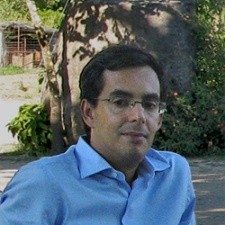Koch, N.M., Matos, P., Branquinho, C., Pinho, P., Luchetac, F., Martins, S.A. & Vargas, V.M.F. (2019) Selecting lichen functional traits as ecological indicators of the effects of the urban environment.
Science of the Total Environment,
654, 705-713. DOI:10.1016/j.scitotenv.2018.11.107 (IF2019 6,551; Q1 Environmental Sciences)
Air pollution and the urban heat island effect are known to directly affect ecosystems in urban areas. Lichens, which are widely known as good ecological indicators of air quality and of climatic conditions, can be a valuable tool to monitor environmental changes in urban environments. The objective of this work was to select lichen functional traits and functional groups that can be used as ecological indicators of the effects of urbanization, with emphasis in the Southern subtropics, where this had never been done. For that, we assessed lichen functional composition in urban sites with different population density, which was considered as proxy for grouping sites in two levels of urbanization (low and medium/high). This a priori grouping was based on their significantly differences on air pollutants and land cover. Urbanization and air pollution showed to affect all lichen functional traits, with different responses depending on the functional group. Medium/high density urbanization was associated to an increase on the mean relative abundance of lichens with chlorococcoid green algae, foliose narrow lobes, soredia as the main reproduction strategy, pruinose thallus and containing secondary metabolites for chemical protection. Lower density urbanization showed a higher relative frequency of cyanolichens and lichens with Trentepohlia as the main algae, loosely attached crustose thallus and isidia as the main reproductive structure. The differences found on photobiont and growth form traits in response to the environmental variables used as proxies of microclimatic conditions (forest cover and number of trees around the sampling units), enabled us to detect the urban heat island effect (drier conditions in more urbanized sites).


